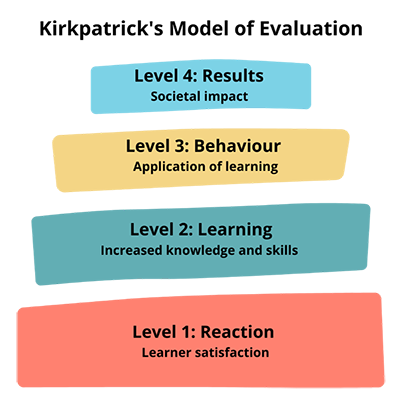Introduction
It can be tempting to think that a learning event, on its own, will lead to the desired changes in work practice, but how do we know these changes have happened? If we train staff to deliver a mental health intervention for children and young people, how do we know it has enhanced their mental health in the manner intended? Kirkpatrick offers a simple way to think about these issues and describes the potential impact of professional learning at four levels:

The Toolkit uses Kirkpatrick’s Model to measure the potential impact of a learning resource (scored on a 1-4 rating scale). One is the lowest level of impact (happiness or satisfaction with the learning) and four is the highest impact score, because it measures the difference the learning made to real life outcomes, in this case to children and young people’s mental health and wellbeing:
This Toolkit will allow users to evaluate Learning and Training Resources that have not been included in the Digital Learning Map. It will drive good practice in decision making and aims to improve the quality of Learning undertaken by the Scottish child workforce to allow them to better meet the Mental Health and Wellbeing needs of children and young people. The Toolkit can also be used by learning resource creators to build in impact measurement from the start.
A short e-learning module to enhance understanding of the different types of impact and the reasons why impact is important.
Guidance on data collection.
Please note that the Hexagon Discussion and Analysis Tool [PDF] can help guide decisions about what learning will best fit your workforce’s needs. This process should be completed before a learning resource is chosen in the first place.